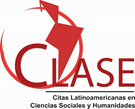Gerencia del conocimiento: respuesta reductora de la huella de carbono de la Universidad de Guayaquil
Abstract
La Universidad de Guayaquil es la Institución de Educación Superior (IES) más grande de Ecuador con una matrícula que ha superado los setenta mil estudiantes. En ella laboran aproximadamente tres mil docentes y al menos dos millares de personal administrativo y de servicio. En correspondencia con tales cifras y con las exigencias requeridas por la actividad de una institución de su tipo, cualquier decisión a tomar en la Universidad de Guayaquil tiene como resultado un impacto ambiental mayor al de cualquier otra IES del país. El objetivo principal de la presente investigación es determinar la huella de carbono producida por una de sus facultades, la cual supera las 37 toneladas de dióxido de carbono (t CO2) al año. Los datos fueron obtenidos a partir del número de impresiones, fotocopias, actas y oficios generados al año. Tal producción es solo una parte de la engendrada por la institución toda. El análisis de los datos obtenidos obliga a la búsqueda y empleo de técnicas de gerencia del conocimiento dentro de la IES. El estudio permite a los investigadores del tema afirmar que gran parte de la huella de carbono, generada por dicha facultad puede reducirse con el uso eficiente de dichas técnicas.
Palabras clave:
Impacto ambiental, gerencia del conocimiento, huella de carbono.
ABSTRACT
The University of Guayaquil is the Ecuador's largest institution of higher education (IES for its acronym in Spanish), with an enrollment that has exceeded seventy thousand students, about three thousand teachers working on it and at least two thousand administrative and service staff. In correspondence with such numbers and as required by the activity of an institution of its kind, any decision made by the University of Guayaquil will result in a greater environmental impact than any other university in the country. The main objective of the research is to determine the carbon trace produced by one of the faculties, which exceeds 37 tons of carbon dioxide (t CO2) per year. The data were obtained from the number of printing, photocopying and documents generated per year. Such production is only a part of the generated by the university. The analysis of the data obtained requires the search and use of knowledge management techniques within the HEI. The study allows the researchers of the subject to confirm that much of the carbon trace, generated by the faculty can be reduced with the efficient use of these techniques
Keywords:
Environmental impact, knowledge management, carbon trace.
Downloads
Published
How to Cite
Issue
Section
License
La editorial "Universo Sur", de la Universidad de Cienfuegos, publica el contenido de la Revista "Universidad y Sociedad" bajo una Licencia Creative Commons Atribución-NoComercial-SinDerivar 4.0 Internacional.
© Podrá reproducirse, de forma parcial o total, el contenido de esta publicación, siempre que se haga de forma literal y se mencione la fuente.










